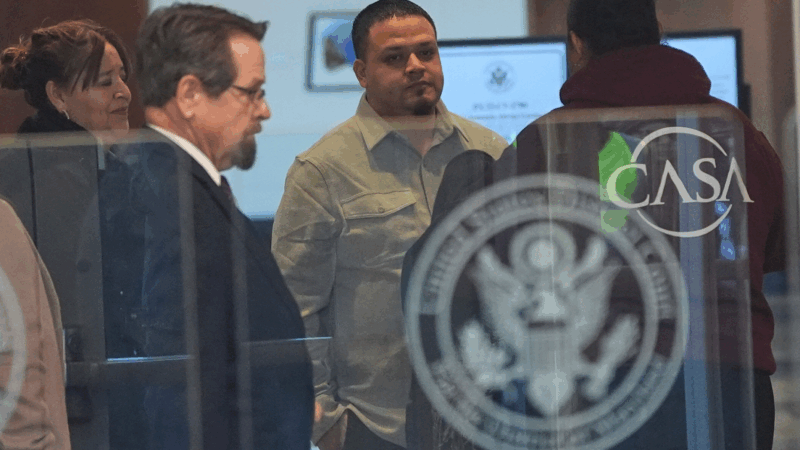Driver’s Education
If you’re over 40 and you grew up in the United States, there’s a good chance you took driver’s education classes in your high school. But you can’t say the same for today’s young drivers. From the Southern Education Desk at WBHM, Dan Carsen reports on a significant shift. The text and a link to the radio story are below.
Can you name an environment that’s widespread in America but did not exist just 60 years ago? Would the sound of tractor-trailers roaring along hot summer pavement help?
It’s the modern Interstate highway, artery of commerce, bane of nervous parents of young drivers. As with any environment that’s new to humanity, we need to learn to navigate this arena of hurtling metal. For better or worse, children are learning all about driving from their parents and guardians long before taking the wheel. But there’s another source of knowledge besides parents: driver’s ed. And it’s fading from America’s high schools.
“I know of people who’ve been thrown out of cars … And been in car accidents – in high school they were killed. So … you know … it’s horrible.”
During that last long pause, Ashley Nance of Vestavia Hills looks across her livingroom couch at her 16-year-old son, Hopson. He recently took driver’s ed at the local high school and says, “It was a good experience. It helped, driving with somebody other than my parents.”
His mother agrees: “It’s nice to have somebody else outside of your family reinforcing the same things that you’ve already been teaching them.”
Ashley has three younger children and she wants them to take driver’s ed, too. And her reasons are not limited to insurance discounts or the benefits of non-parent teachers:
“Nobody ever gets in a car thinking, ‘I think I’ll kill somebody today.’ But it happens … every day. I took driver’s ed at Vestavia over 20 years ago, and I remember the things that my driver’s ed teacher taught us.”
But school-based courses are in decline: In the mid-70s, almost 100 percent of students took driver’s education for credit, during the day, in their high schools. Now, that number is less than 40 percent. So it’s even harder for students from rural areas or limited means to take the classes.
Jonathan Adkins is with the Governors Highway Safety Association:
“Driver education has really gone downhill over the last couple of decades. In many cases it’s no longer offered in schools. That has been a result of difficult budget times. We’ve seen a lot of privatization, private companies offering driver’s education. Some of these courses are good, some of them are not. There’s not a lot of oversight.”
But one thing is not hard to monitor: car accidents are by far the leading cause of death for U.S. teens. And, according to a recent GMAC Insurance survey, three of four adult drivers don’t know something as basic as safe following distance. (It’s 3 seconds of driving time, by the way. If you can’t count “one one-thousand, two one-thousand, three one-thousand” before you pass what the car in front of you passed, you’re tailgating. You’re not moving any faster, just moving along in a spot that puts you and everyone around you at much more risk, for no reason.) So in light of those statistics, and the fact that most Americans will drive cars for many miles and many years: are school-based driver’s ed programs really “extras”?
The costs of the programs are significant, with teacher’s salaries leading the way. Sharon Fife, president of the Driving School Association of the Americas, says an enterprise that delivers a service full-time is going to be more cost-effective than a school:
“Driver’s ed in public high schools, due to liability issues, and funding, financially, the programs have just gotten a little tighter and there hasn’t been as much money available. Years ago dealerships used to let driver’s ed programs use cars instead of charging them or making the high school lease them. Insurance is expensive, gas, maintenance of vehicles…”
And beyond budgetary concerns, some studies in the 1970’s and 1980’s questioned whether driver’s ed programs lower accident rates. Those studies are still being debated, and more recently, driver’s ed vehicles themselves have been involved in serious crashes. And the issues around drivers’ ed are becoming even more crucial because the teen population is rising.
That contributed to the federal government releasing new voluntary guidelines for driver’s education programs early last year. And rising auto deaths worldwide have prompted the United Nations to declare 2011 through 2020 “The Decade of Action for Road Safety.” Most traffic-safety analysts welcome those steps, as well as increases in public interest, safety research, and computer-based driver’s ed programs.
But instructor Kent Underwood teaches a Homewood high school student to drive the old-fashioned way, in a car:
“Good job using your turn signals … Even though there’s no traffic around that’s a great habit.”
And Underwood highlights some of the new dangers facing a fresh generation of drivers:
“You look down to respond ‘O-K’ to a text message, you could cause a fatal accident.”
Statistically, the best way to keep young people and the rest of us safe is to keep them from driving, period. But in this age of working and single parents, that’s often easier said than done. As Ashley Nance explains, “We live in our car during the school week.”
Having that extra driver in the household makes balancing work, school, and extra-curriculars more manageable. As Hopson Nance’s 9-year-old brother Henry puts it, now that Hopson has learned the basics of safe driving, “He can drive really good, and he can bring us to places.”
Hopson’s 11-year-old sister Elizabeth is happy about Hopson’s driver’s education for another reason:
“‘Cause I don’t feel like dying today.”
Though school-based driver’s ed programs are expensive, some things are hard to quantify in a budget.
Russia attacks Kyiv, killing 1 and wounding many ahead of Ukraine-US talks
Russia attacked Ukraine's capital with missiles and drones early Saturday morning, killing one and wounding over 20 people a day before talks between Ukraine and the U.S., local authorities said.
Myanmar is set to hold phased elections. Here’s why they’re being called a ‘sham’
Myanmar's military rulers are holding a general election in phases starting Dec. 28 amid the country's civil war. The head of the U.N. says the vote will be anything but free and fair.
Judge to hold hearing on whether Kilmar Abrego Garcia is being vindictively prosecuted
A federal judge this week canceled the trial of Kilmar Abrego Garcia, and scheduled a hearing on whether the prosecution is being vindictive in pursuing a human smuggling case against him.
Thailand and Cambodia sign new ceasefire agreement to end border fighting
In addition to ending fighting, the agreement calls for no further military movements by either side and no violations of either side's airspace for military purposes.
Top Instagram reels from Goats and Soda in 2025: Plumpy’Nut, aid cuts, soccer grannies
Our most-viewed Instagram videos include reports from a Rhode Island factory that makes special food for malnourished children and from a tournament for soccer-playing "grannies."
Should the U.S. model its vaccine policy on Denmark’s? Experts say we’re nothing alike
The Trump administration wants to revamp U.S. childhood vaccination recommendations to align with some other peer nations, including one tiny country in northern Europe.








